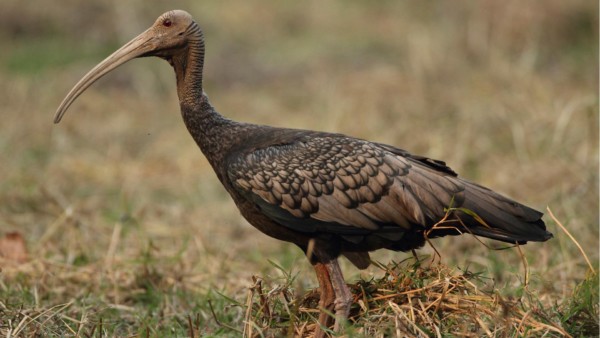
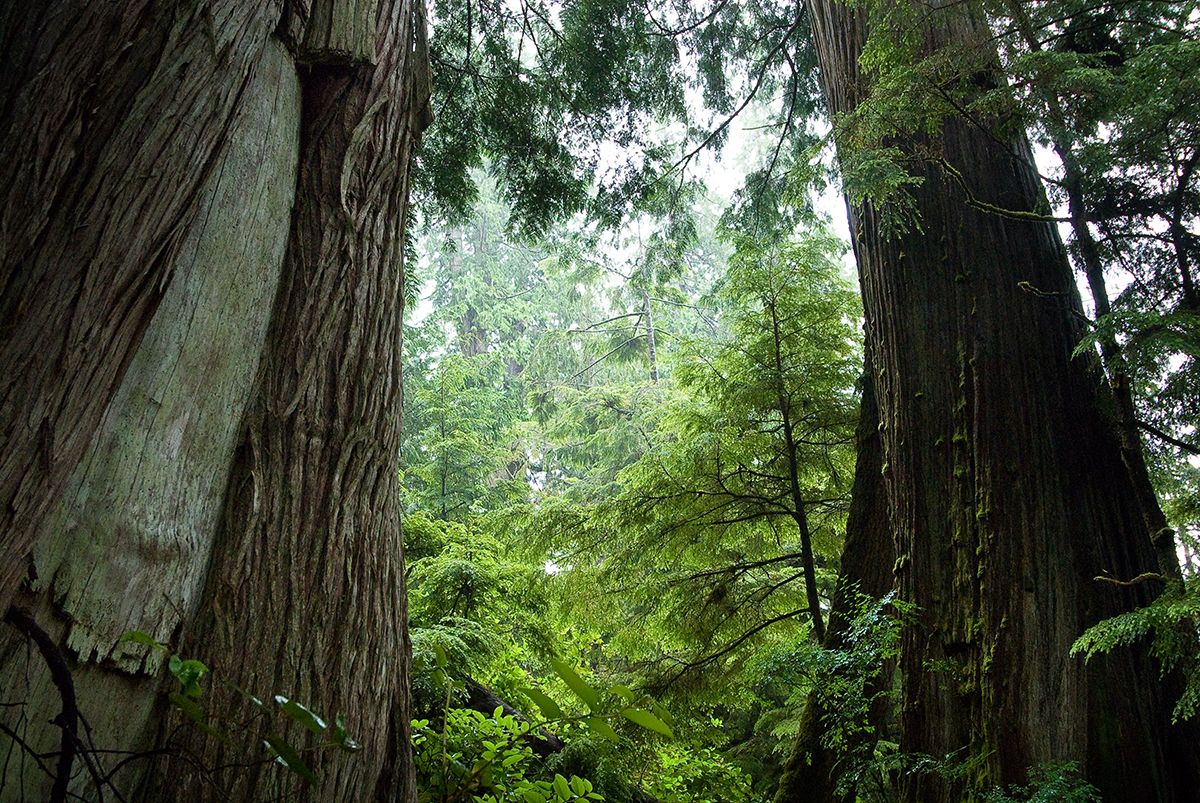
Greenpeace video – After almost two decades of conflict and then collaboration, a unique partnership of First Nations governments and the British Columbia government along with environmental groups and forestry companies have come to a final long-term agreement on how to safeguard the beautiful Great Bear Rainforest on Canada’s west coast.
Indigenous cultural and ecotourism is playing a major role in the new conservation economy of the Great Bear Rainforest.
The Great Bear Rainforest is the largest tract of intact coastal temperate rainforest left on Earth (6.4 million hectares: about the size of Ireland), situated on the central and north coast of the Province of British Columbia on Canada’s west coast. With as many as 100 unlogged large valley systems the Great Bear Rainforest (GBR) supports tremendous biodiversity including grizzly bears, black bears, the rare white spirit bears, unique fisher wolf populations, six million migratory birds, three thousand genetically distinct salmon stocks, and a multitude of unique botanical resources. This region sustains 20% of the world’s remaining wild salmon.
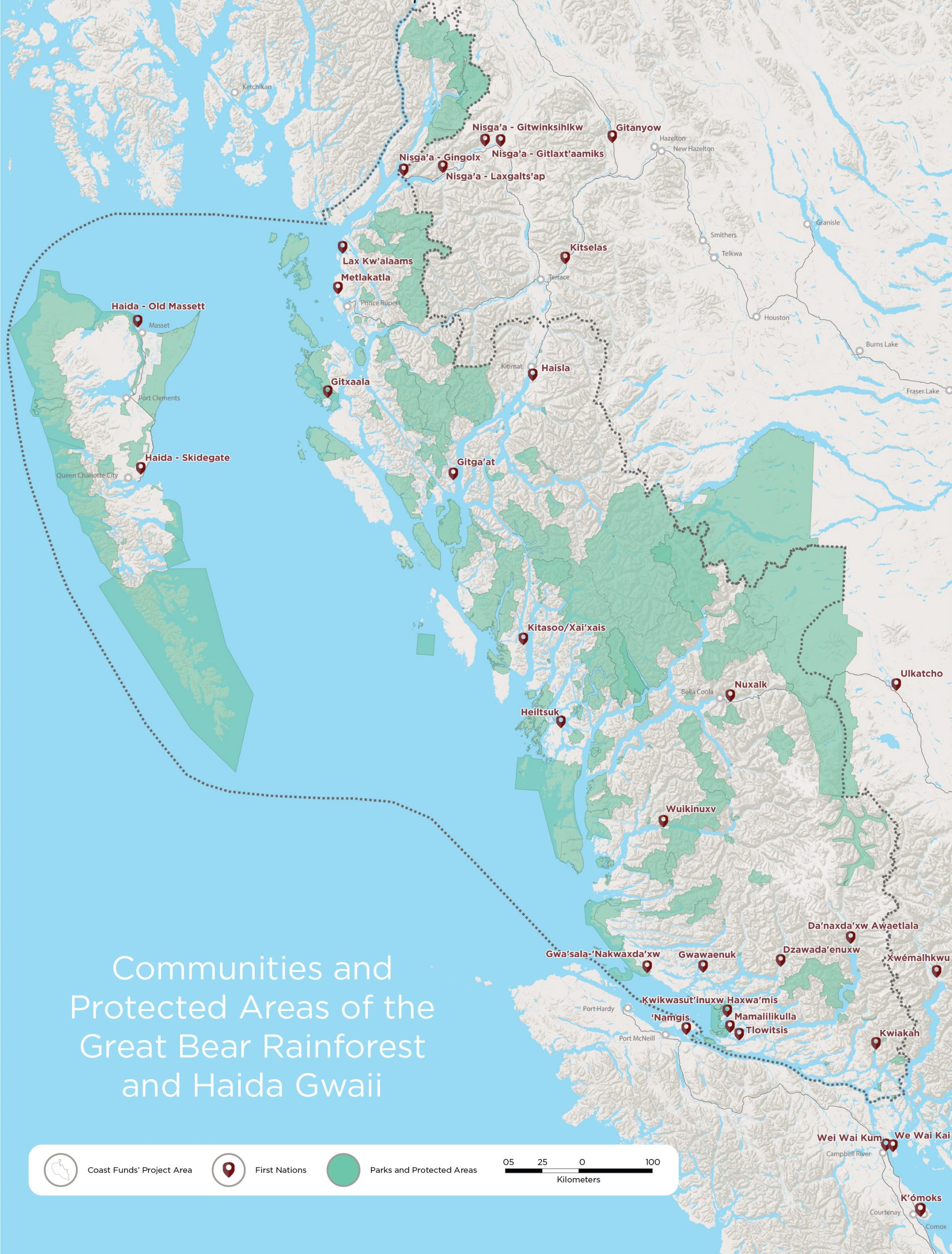
Prince Rupert the port city (population 22,000) at the north end of the GBRF serves as the road, air and water transportation hub for the north coast. The majority of the communities situated within the GBRF are small, isolated communities accessible only by air or water. This region and the adjacent archipelago of Haida Gwaii are the unceded traditional territories of 27 coastal First Nations.
For generations, the First Nations have relied on their knowledge of seasonal cycles of the abundant nature to sustainably harvest a wide variety of resources. They were the responsible stewards over their traditional territories and resources, and they maintained their right to govern, to make and enforce laws, to decide citizenship and to manage their lands, resources and institutions.
In the 1800s non-Indigenous people began arriving in the Great Bear Rainforest and Haida Gwaii. In addition to other significant harms caused by colonization, they looked to log the vast tracts of forest and fish the abundant salmon runs. Throughout much of the last century, pulp mills, sawmills, logging camps, canneries, and mines extracted resources from First Nations’ traditional territories despite their protests. The First Nation inhabitants gained few benefits from the early resource extraction and they suffered extensive economic, social and cultural damage.
By the 1990s the region’s economy had dwindled to isolated logging camps, a much-reduced fishing fleet, and a handful of tourist lodges scattered through the region. Most of the First Nations were suffering from high unemployment and low graduation rates, limited infrastructures, poor access to healthcare, substandard housing, and low incomes.
In the 1980s and early 90s conflict in British Columbia’s rainforests erupted as public concern heightened over the clear cut logging methods. On Haida Gwaii, Elders and youth stood side by side with environmental groups to block the logging trucks and protect large portions of Haida Gwaii (meaning ‘islands of the people’ to the local Haida people). Environmental activists followed the Haida lead, fighting to protect the remaining 13 intact watersheds on Vancouver Island, culminating in 1993 when over 900 people were arrested trying to prevent logging in Clayoquot Sound. It was the largest mass arrest in Canadian history.
Most of BC’s land base is publicly owned, with a great deal of it on Indigenous lands with unresolved Rights and Title, and 95% of BC’s commercial forests are found on public land. In 2000, leaders from First Nations communities throughout the Great Bear Rainforest came together to restore and implement responsible and sustainable land, water, and resource management approaches on the Central and North Coast of British Columbia, and on the outlying archipelago of Haida Gwaii. First Nations wanted to promote economic development on the coast while at the same time protecting the environment and quality of life of those who lived there.
A unique alliance was formed between nine of the First Nations, called the Coastal First Nations (Great Bear Initiative Society). The goal of this group is to restore and implement ecologically, socially, and economically sustainable resource management approaches on the Central and North Coast and Haida Gwaii. In the southern end of the GBRF the Na̲nwak̲olas Council represents five First Nations. These Nations together hold stewardship of Aweenak’ola, which means “ the lands we are on”, with their traditional areas on North Vancouver Island and the mainland coast opposite. These two groups have been instrumental in protecting the GBRF region.
In February 2016, the Government of B.C., First Nations, environmental groups, and forest industry representatives announced the final decision on how the Great Bear Rainforest would be managed in 2016 and into the future. The approach is Ecosystem-Based Management (EBM) an approach based in science as well as traditional, local knowledge. Ecosystem-based management in the area is defined as “concurrent achievement of high levels of ecological integrity and high levels of human well-being.”
The agreement has two goals:
The 2016 Great Bear Rainforest Land Use Order and Great Bear Rainforest (Forest Management) Act will conserve 85% of the forest and 70% of old growth over time, achieving a high level of ecological integrity. The Order and Act have also resulted in the following achievements:
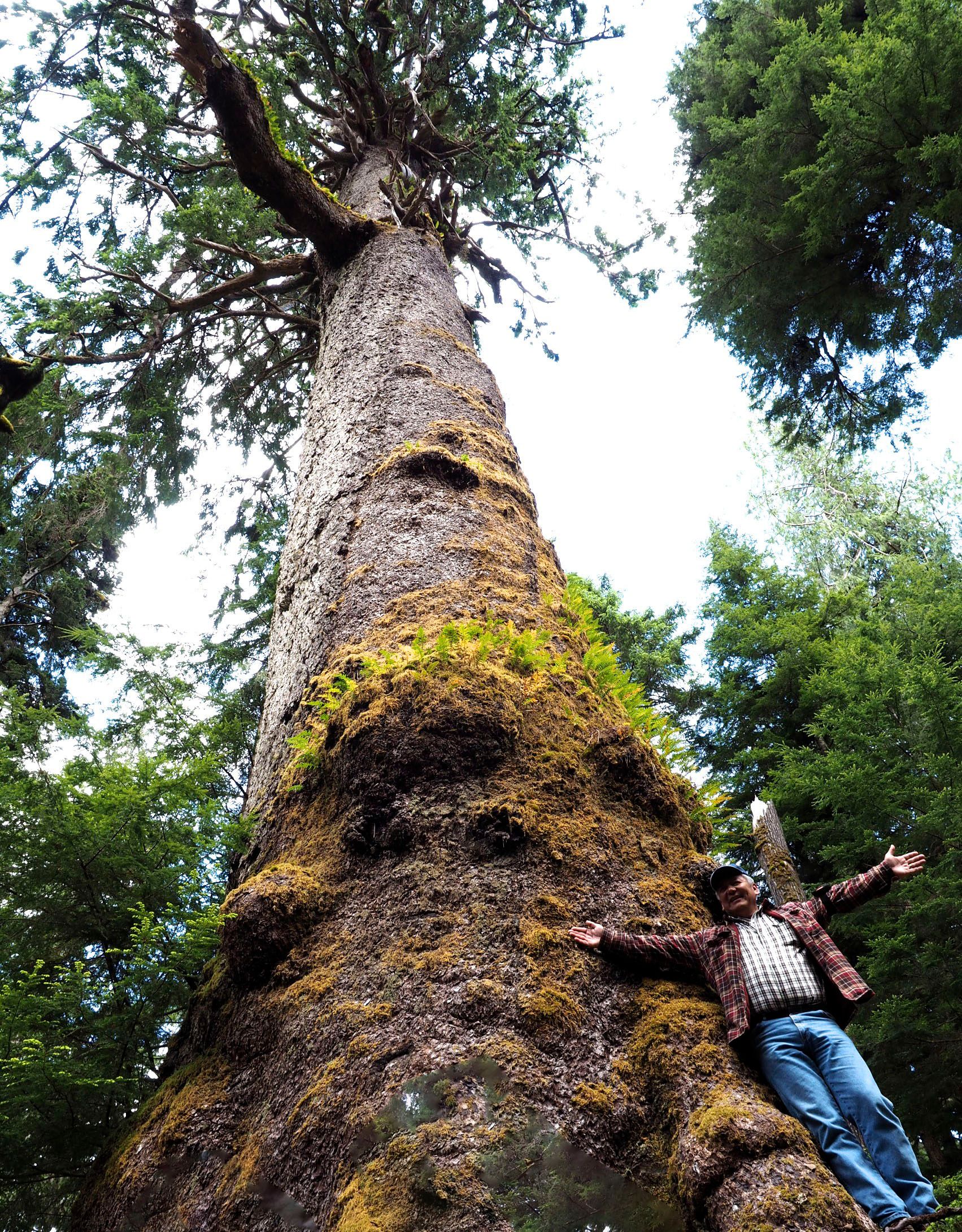
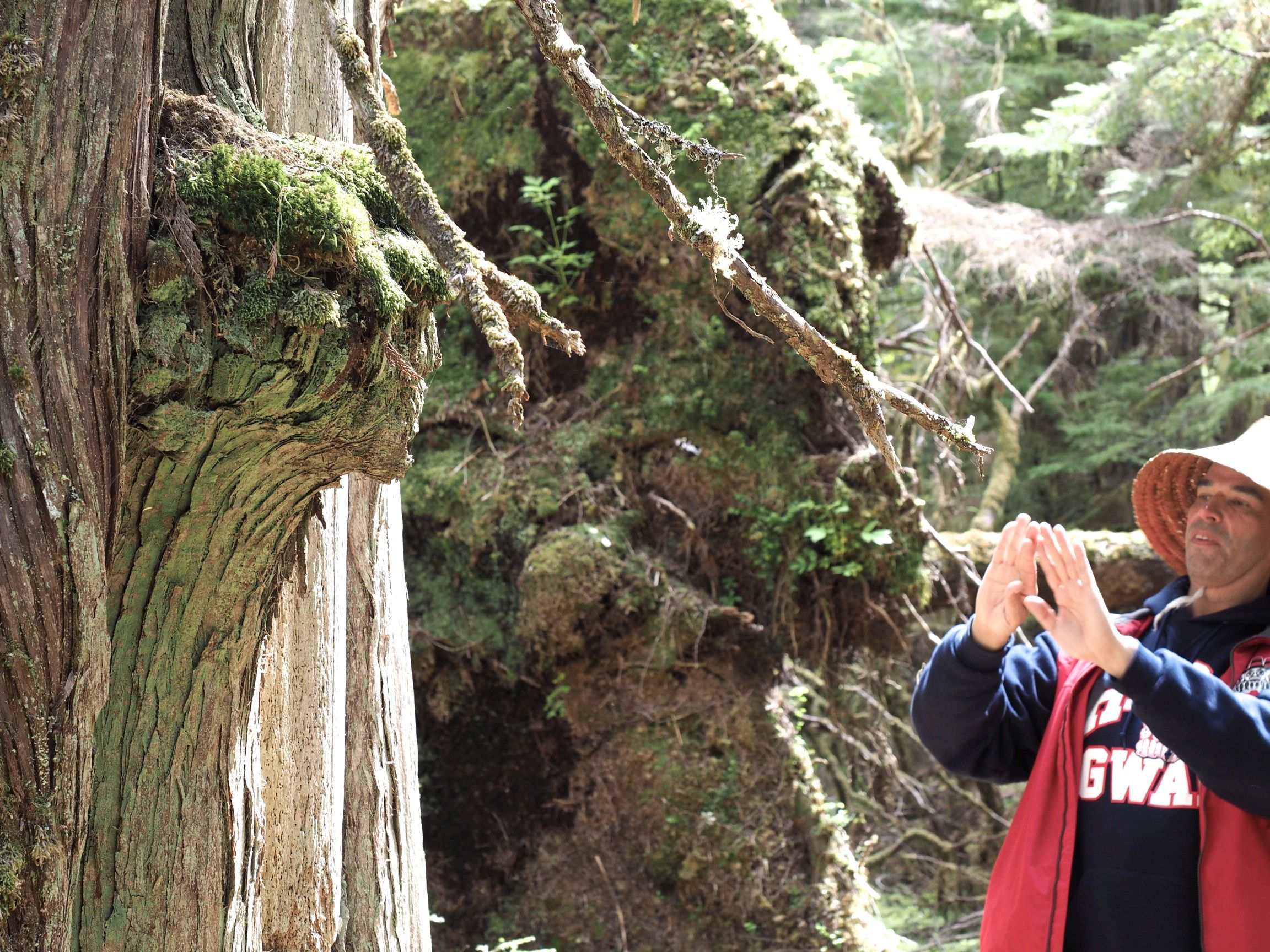 A Haida Guardian Watchman points out a
A Haida Guardian Watchman points out aThe following are a selection of tourism initiatives supported through available conservation financing capital in the GBRF that clearly illustrate the connection between tourism and conservation:
Nawalakw Healing Centre & Ecotourism Resort
At Hada River estuary, in the heart of Musga’makw Dzawada’enuxw territory, a vision of cultural revitalization is becoming reality. The vision is of a place where Kwak̓wala, a language on the brink of extinction, will once again be spoken immersively; a place where cultural revitalization underpins economic and social well-being. The place is Nawalakw (pronounced Now-wah-low-k, and meaning ‘supernatural’ in Kwak̓wala).
Nawalakw is an ecotourism destination, healing village and culture camp that will offer healing, language and cultural immersion programs for Kwakwa̱ka̱ʼwakw people most of the year while operating as a world-class eco-tourism resort in the summer months.
Nawalakw is a social venture and charitable enterprise in Kwakwaka’wakw territory in the Great Bear Rainforest of British Columbia. The project is dedicated to language revitalization and healing. (Learn more here)
Cultural tourism in Nisg̲a’a Territory
The Nisg̲a’a Highway, running through the heart of the Nation’s territory from Terrace to Gingolx, was given the numeric designation 113. The number was not chosen arbitrarily; from 1887 when Nisg̲a’a chiefs travelled to Victoria to demand recognition of title, to 2000, when the Nisg̲a’a Treaty was ratified and the Nisga’a Lisims Government passed its first law, exactly 113 years had passed. Over the next five years, the Nisg̲a’a Lisims Government would extend and upgrade the highway, connecting the four villages of its Nation and inviting the world to visit Nisg̲a’a territory.
Visitors to the Nass Valley are greeted by Txeemsim, a super-natural being who brought light to the Nass River in a time that the Nisg̲a’a lived in semi-darkness. His image is the centrepiece of a recent cultural marketing and tourism initiative by the Nisg̲a’a Lisims Government. The initiative expanded and enhanced an Auto Tour Route along the Nisg̲a’a Highway, developed a brochure to guide visitors along the route, and built a website devoted solely to tourism in Nisg̲a’a territory. The project and the partnerships that developed, as a result, have boosted tourism in the Nass Valley, raised the profile of entrepreneurs in the four Nisg̲a’a villages, and reinforced the sovereignty and culture of the Nisg̲a’a Nation. (Learn more here
Spirit Bear Lodge
The celebrity of the creature parallels and is in large part due to, the success of the eponymous Spirit Bear Lodge. Like the bear whose image adorns its logo, the lodge has become known worldwide. Over the last two decades, Spirit Bear Lodge has helped strengthen economic, conservation and cultural well-being in the community of Klemtu at the heart of Kitasoo/Xai’xais territory.
Employing nearly 10%of the local population, the Lodge has diversified opportunities for employment in the community, particularly for youth. Additionally, drawing attention to the region’s stunning landscape and globally rare species like the Spirit Bear, the business helped attract researchers to the area and strengthen the protection of the Nation’s vast territory. And perhaps most importantly, it played a major role in the establishment of a cultural stewardship program for the Nation’s youth and elders. (Learn more here)
Hiellen Longhouse Village
Old Massett Village Council has launched a promising new venture on a long-cherished village site of Tlielang. In addition to meeting a great demand for ecotourism experiences of visitors to Haida Gwaii and creating jobs and training for locals, it also hosts events that contribute to the Nation’s ongoing cultural revitalization. People enjoy a deeper connection to nature at Hiellen Longhouse Village—and leave with a stronger appreciation of the culture of the Haida Nation.
Comprised of seven individually rentable self-contained cabins and a 10-room building that can be rented by groups, all styled as traditional Haida longhouses, the Village has a distinct feel. Guests don’t come for typical amenities like TV, internet, phones, central heating, linens, or even crystal-clear tapwater; nor do the guests themselves resemble any typical slice of the tourism market. But they probably leave with a deeper respect for indigenous people’s ties to the land—because Hiellen Longhouse Village is as likely to connect them with Haida culture, staff, and families who’ve descended from people who inhabited this site for millennia as it is to host independent young eco-adventurers, seniors, university groups, health retreats and wedding parties. (Learn more here)
Homalco Wildlife Tours
Homalco Wildlife Tours is a world-class wildlife viewing and cultural experience tour provider.
The start of the tourism operation had nothing to do with wildlife viewing, however. The business began with the long-term efforts of the Homalco people to restore and protect the Algard Creek located in the remote traditional territory of the Nation. To combat reduced salmon runs, members of the Nation proactively sought to establish a hatchery in the river to restore the salmon population.
In 2009, Homalco capitalized on the increase in bears to the valley by investing in infrastructure to upgrade the Orford Bay Hatchery and to develop a program for safe wildlife viewing. It was the first of several phases to ensure that people and bears would be protected from one another and that the environmental conditions to support a tour business would be sustainable. (Learn more here)
Knight Inlet Lodge
In 2017 the Nanwakolass Timber Limited Partnership acquired Knight Inlet Lodge. Na̲nwak̲olas Council is a First Nations controlled entity that is mandated to secure economic development opportunities for the benefit of its five limited partner First Nations; Da’naxda’xw Awaetlala, Mamalilikulla, Tlowitsis, Wei Wai Kum and K’omoks First Nations, within their collective traditional territories.
Knight Inlet Lodge is Canada’s premier Grizzly Bear viewing destination. The Lodge is a remote wilderness paradise. Situated in Glendale Cove, Knight Inlet, the resort is in prime Grizzly Bear territory where it is not uncommon for guests to see Grizzlies from the deck of the Lodge. In addition to bear viewing there is a full program of wilderness tours including Whale Watching, Rainforest Hikes, Inlet Cruises and Nature Interpretation Hikes. Since its humble beginning as an Eco Lodge in 1995, Knight Inlet Lodge has grown to be an industry leader with innovative and environmentally responsible programs. (Learn more here)
k̓awat̕si Economic Development Corporation
Decades after a government relocation of two First Nations separated them from their homelands and means of subsistence, the Gwa’sala-Nakwaxda’xw Nations began developing a plan to return their community to economic self-sufficiency.
Through an in-depth community consultation and planning process, the Nations developed a strategy to support its members through the creation of k̓awat̕si Economic Development Corporation. Within a few short years, the corporation has become an economic force on north Vancouver Island, operating seven distinct businesses and employing, during its peak season, over 130 employees.
The water taxi boats and staff are shared by k̓awat̕si Tours, the corporation’s tourism business. The company offers a variety of eco-tours in the nearby region and the Gwa’sala-’Nakwaxda’xw homelands as well as a number of cultural experiences, including cedar weaving, drum-making, and the opportunity to listen to an Elder’s story or witness cultural dances.
The kawat̕si Economic Development Corporation owns the Kwa’lilas Hotel in Port Hardy. The hotel is a grand statement of the Gwa’sala-’Nakwaxda’xw people, their culture, and their ability to thrive. Art from the community, including a series of beautiful masks, is found throughout the hotel, including an 18 square foot copper art piece that hangs in the lobby that tells the story of the two Nations. (Learn more here)
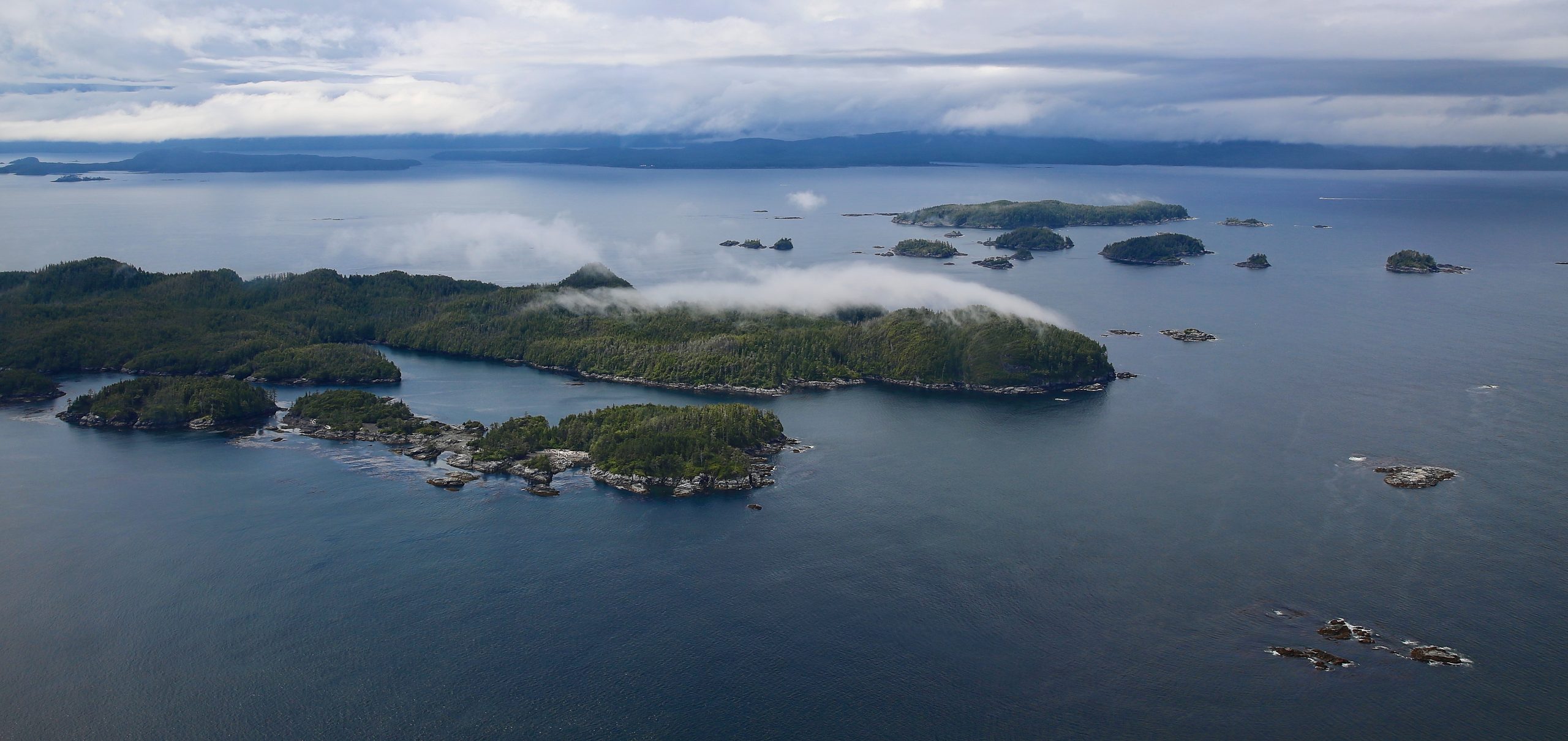
Responsible tourism (cultural and ecotourism) was identified early on as one of the critical conservation-based economic diversification opportunities for the 27 First Nations. An innovative conservation financing model, set up through Coast Funds was the key catalyst for implementing many of the tourism initiatives. Coast Funds is a globally recognized model of permanent conservation financing that is dedicated to empowering First Nations in the Great Bear Rainforest and Haida Gwaii to achieve healthy and vibrant economies and communities in tandem with the conservation of their homelands for the benefit of future generations.
First Nations and others had long challenged environmental groups to demonstrate that conservation initiatives could promote economic diversification and deliver benefits to communities rather than hinder economic development. In response to this challenge, environmental groups promoted the idea of attracting conservation financing capital.
Conservation financing meant more than simply injecting money into the local economy—an approach that had been tried unsuccessfully in the past. Instead it linked clear, lasting conservation commitments to new investments supporting innovative new businesses and building conservation management capacity in First Nation communities.
Because some models of business opportunities envisioned under conservation financing were unprecedented, the Coastal First Nations did some pilot projects and tried out new business concepts such as shellfish aquaculture and research into harvesting non-timber forest products. They also explored pilot projects with Ecosystem-Based Management (EBM) forestry.
Coast Funds was created in 2007 out of mutual recognition by conservationists, First Nations, industry, and government that a sustainable economy is vital to conservation efforts in the Great Bear Rainforest and Haida Gwaii areas of British Columbia.
Coast Funds was created to make the vital connection between sustainable development projects that embrace conservation values; the social, cultural, and economic well-being of the First Nations communities; and the long-term stewardship of the region. Today, Coast Funds serves as a successful model of Indigenous-led conservation finance, demonstrating that First Nations’ leadership and self determination are key to permanently protecting ecologically and culturally significant places on Earth.
Participation from the private philanthropy community brought funding commitments that were used to leverage government contributions. The first $60 million dollars of private funds were allocated to a conservation endowment fund dedicated solely to conservation management, science and stewardship jobs in First Nations communities. The second $60 million dollars of public funds were used to set up a depleting fund to invest in sustainable business ventures in First Nations’ territories and communities. The economic development fund supports environmentally sound and sustainable economic development activities throughout the Great Bear Rainforest and Haida Gwaii. Priority is given to projects that have positive environmental or social impacts, direct or indirect.
For thousands of years, First Nations have been caretakers of the Great Bear Rainforest and Haida Gwaii, managing natural resources to ensure they were not depleted. Today, First Nations are continuing this vital role as proactive stewards of their territories through regional Guardian Watchmen programs. First Nations operate 17 unique regional monitoring and Guardian Watchmen programs, covering an average area of 4.1 million hectares annually.
The First Nations continue to lead conservation efforts in the region by combining traditional stewardship practices with modern science and regional monitoring that protects and restores ecological integrity across the coast. First Nation initiatives are resulting in robust research, habitat protection and restoration, and monitoring of key species and resources. These programs help to protect First Nations’ values and traditions, ensuring that resources and natural surroundings are sustained for future generations.
The video ‘Keepers of the Coast’ takes a close look at how the Kitasoo/Xai’Xais, Heiltsuk, Nuxalk, and Wuikinuxv Nations are stewarding their marine territories.
There were 195 separate conservancies, parks, and protected areas established within the Great Bear Rainforest and Haida Gwaii as of December 31, 2020. These areas include important animal habitats, sensitive ecosystems, and First Nations’ cultural and heritage sites.
First Nations are engaging with British Columbia’s Ministry of Environment (BC Parks) on a government-to-government basis to develop management plans for parks and conservancies that affirm the significance of protected areas and provide guidelines for preserving important ecological and cultural values.
These plans outline cultural features, archaeological sites, harvesting sites, and ecologically sensitive areas, ensuring that they can be protected and maintained for current and future generations. By establishing management plans, First Nations and the provincial government have guidelines to regulate activities that can occur within protected areas.
The Great Bear Rainforest is an internationally significant conservation model driven by Indigenous communities, supported by philanthropist driven conservation funding, and benefitting from tourism as part of an evolving conservation economy. The three big concepts that are, and could be further shared around the world are:
Indigenous Protected Areas
Indigenous peoples see the land and water as inseparable when it comes to stewardship and conservation. First Nations are leading conservation and research initiatives in the Great Bear Rainforest and Haida Gwaii to protect and sustain the ecological integrity of the region.
Indigenous Peoples decide what conservation and protection means to them and to the lands and waters and are given the space to lead its implementation in their territories.
Indigenous Protected and Conservation Areas (IPCA’s) is the term used to describe a variety of land protection initiatives in the Canadian context.
Examples include Tribal Parks, Indigenous Cultural Landscapes, Indigenous Protected Areas, and Indigenous conserved areas.
IPCAs are lands and waters where Indigenous governments have the primary role in protecting and conserving ecosystems through Indigenous laws, governance and knowledge systems. Culture and language are the heart and soul of an IPCA.
IPCAs in principle:
Conservation Finance
Coast Funds was created to make the vital connection between sustainable development projects that embrace conservation values; the social, cultural and economic well-being of the First Nations communities; and long-term conservation of the region’s unique ecosystems. Designed as a global model of what conservation must become — an inherent part of healthy economies, environments and cultures—Coast Funds is dedicated to empowering the First Nations in the Central and North Coasts and Haida Gwaii in achieving healthy and vibrant economies and communities in tandem with the conservation of their homelands for the benefit of future generations.
The economic development fund supports environmentally sound and sustainable economic development activities throughout the Great Bear Rainforest and Haida Gwaii. Priority is given to projects that have positive environmental or social impacts, direct or indirect.
Additionally, the Province has committed to amending atmospheric benefit-sharing agreements with Na̲nwak̲olas Council and Coastal First Nations. This will increase the forest carbon credits they can use to support implementation of ecosystem-based management and community development projects of importance.
Large Scale Indigenous Led Conservation
The GBRF agreement is a unique collaboration between decision makers (First Nations and Government) and key stakeholders including ENGO’s, private industry and the philanthropy sector that provides for:
Indigenous-led ecotourism has the potential to generate lasting and rewarding community impacts. Communities benefit from a homegrown economic engine that employs their youth and supports auxiliary businesses. Indigenous entrepreneurship thrives. Community pride and solidarity strengthen when residents share their culture, language, arts, and heritage with others and one another. Communities connect with their land and water as a result of ecotourism efforts, thereby reinforcing their commitment to stewarding their surroundings. Community leaders benefit from an alternative path for economic development, very different in nature than resource extraction industries.
Communities retain youth engaged in ecotourism who might otherwise leave in search of employment.
Finally, when Indigenous communities integrate a sustainable relationship with their hereditary land into their daily lives, ecotourism can be a source of personal well-being, health, and healing.
Coast Funds continues to offer First Nations throughout the GBRF a continuous intake for new applications with four rounds of funding every year. Funding focuses on the start-up or expansion of First Nations owned-and- operated tourism businesses and economic infrastructure that directly supports multiple businesses including entrepreneurs.
The economic development fund supports environmentally sound and sustainable economic development activities throughout the Great Bear Rainforest and Haida Gwaii. Priority is given to projects that have positive environmental or social impacts, direct or indirect. Funding covers the following:
The Coast Funds 2020-2022 Strategic Plan indicates they are beginning to explore new opportunities to recapitalize Coast Funds both to seek the replenishment of the depleting economic development fund and to bolster the endowment in the conservation fund in order to support continuity of intergenerational stewardship initiatives throughout the Great Bear Rainforest and Haida Gwaii.
While the last decade since Coast Funds’ inception has seen many successes, there is so much more to do. First Nations across the coast have made it clear: diversified and self-determined revenue is required to build and sustain resilient self-governing stewardship. In collaboration with Coast Funds, First Nations are forming long-term visions and fundraising strategies to strengthen the stewardship of their territories for generations to come. (Learn more here)
© Linking Tourism & Conservation (LT&C) 2019
We are grateful that you support the work and mission of LT&C! We accept donations through Credit Card, PayPal or international bank transfer:

Donate through Credit Card
Please click the Donate button and then choose your PayPal account
Bank details:
Cultura Sparebank
Pb. 6800, St. Olavs plass
N-0130 Oslo
Name: Linking Tourism & Conservation,
Account no.: 1254 05 95168
IBAN: NO8712540595168
BIC/SWIFT: CULTNOK1
Routing BIC: DNBANOKK
Please mark payments with your name and/or email address
Sign up for an LT&C membership by filling in the details below.
Would you like your LT&C-Example/Initiative to be listed on our website? Please fill in the form below.